The German Shepherd Dog is a versatile and intelligent breed that is prized for its loyalty, bravery, and trainability. Originating from Germany, they have been used for various roles, including military, police, search and rescue, and as loving family pets. With their distinctive appearance, strong work ethic, and friendly disposition, they have become one of the most popular breeds in the world.
This article from Canvas Personalized will detail the breed to help you decide if a German Shepherd is suitable for you and your family.
1. German Shepherd Dog Breed Information
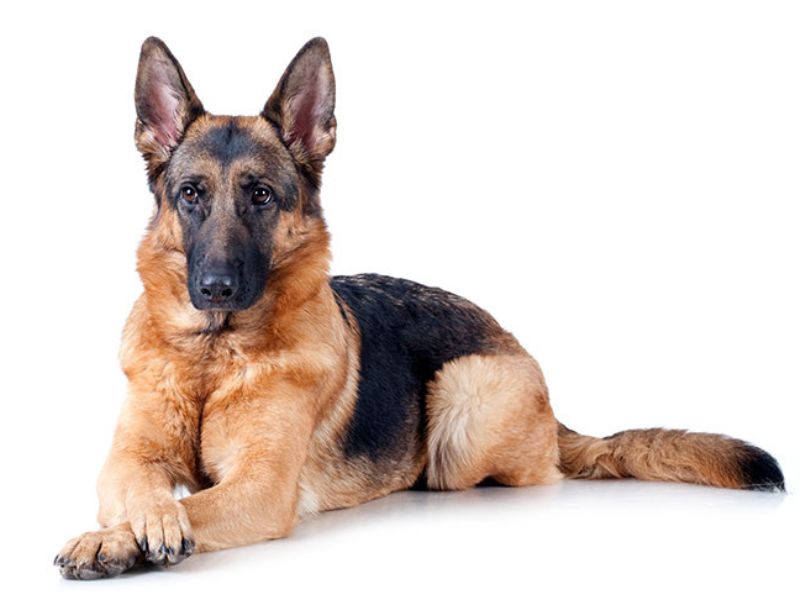
German Shepherd Breed Overview
| Origin | Germany | Good With | Families, children, cats, and other dogs |
| Dog Breed Group | Herding, Guard Dog | Temperament | Gentle; friendly; playful; anxious and aloof |
| Common nicknames | Alsatian Alsatian Wolf Dog | Energy Level | Average |
| Height | Male: 24-26 inches Female: 22-24 inches | Shedding | Normal |
| Weight | Male: 65-90 lbs Female: 50-70 lbs | Tendency to Drool | Low |
| Coat | Medium-length double coat | Snore | High |
| Color | Tan with black saddle, sable, solid black or bi-color | Bark | Frequent |
| Life span | 10-14 years | Easy To Train | High |
| Other traits | Easy to groom; high prey drive; apartment-friendly; cold weather tolerant; strong loyalty tendencies and good hiking companion |
The German Shepherd is one of the top 10 most popular dog breeds in the United States and perhaps one of the best-known dog breeds in the world.
Sourced By The American Kennel Club
German Shepherd History
They trace back to working dogs bred in Germany around the late 1800s. These essential farm companions excelled at herding sheep and guarding property. However, the breed’s official recognition wasn’t smooth sailing. In 1899, Captain Max von Stephanitz established the first standard after debates about desired traits. Interestingly, the breed faced a name change due to anti-German sentiment following World War I. For a time, they were known as Alsatian wolf dogs (or simply Alsatians) in countries like the US and UK. This name went out of favor by 2006.
>> Go beyond with the best guide to take care of Australian Shepherd Dog Breeds!
Appearance

The German Shepherd Dog is a large breed, which weighs approximately 50–90 pounds. They are easily recognizable because of their perked-up ears and dark, almond-shaped eyes, which convey an alert yet friendly look. Other key features of the breed’s appearance include:
- Coat: German Shepherds have a medium-length double coat that is thick and dense. The outer coat is medium to long, and the undercoat is dense and soft. Beyond the familiar black and tan, sable, silver, liver, and panda are less common hues in this breed. Pure black German Shepherds and white German Shepherds also exist.
- Tail: They have a bushy tail that is carried low when the dog is relaxed and lifted when the dog is alert or excited.
- Head: They have a strong and well-defined head, with a broad skull and a well-defined stop (the point at which the skull meets the muzzle).
- Muzzle: They also have a solid, square-shaped muzzle with a scissors bite (the top incisors overlap the bottom incisors).
- Body: The German Shepherd Dog has a solid and muscular body, a deep chest, and straight, strong legs.
German Shepherds Temperament
German Shepherds might seem aloof at first glance, but it’s more reserved affection than aggression. They take their time getting to know someone, but once they do, their loyalty is unwavering. They have a friendly and welcoming attitude within their family but can become strong protectors when faced with danger, demonstrating their impressive watchdog skills. With all these personalities, it is no wonder that German Shepherds are among the most favorite family dogs.
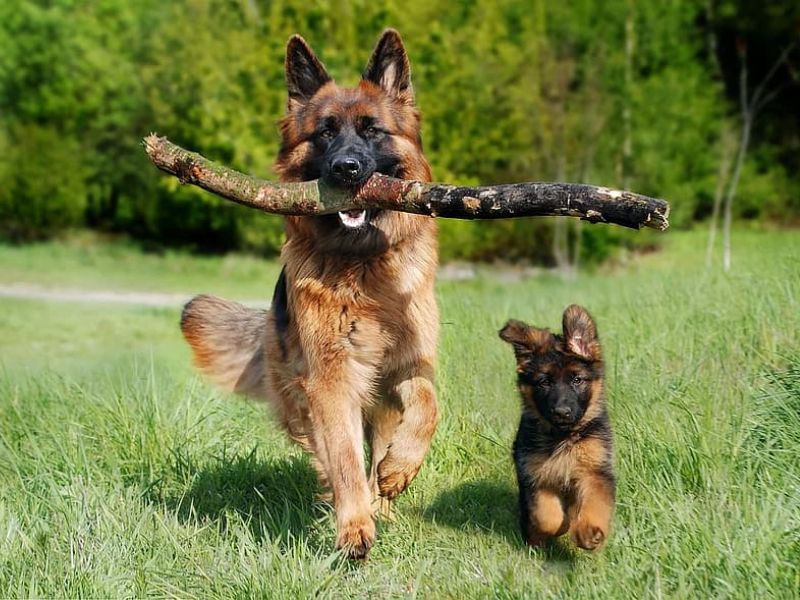
German Shepherds are known as one of the smartest dog breeds. Since they have a long history of selective breeding in the role of herding dogs, they are naturally curious and eager to be of service. Their eagerness to please and trainability make them superstars in the working dog world. Whether it’s alerting someone who can’t hear the doorbell or finding a person buried in snow, these talented pups seem to have endless potential.
Stanley Coren, a canine psychologist, published a book titled “The Intelligence of Dogs,” ranking dog breeds based on their trainability and working intelligence. German Shepherds hold the number three spot, meaning they can learn new commands with as few as 5-10 repetitions and readily obey them.
However, these intelligent pups require a high level of interaction and company. Long stretches of isolation are not conducive to their nature. Without enough playtime, exercise, and mental stimulation, they can get bored and frustrated. This can lead to barking, chewing, and other unwanted behaviors.
Ideal Dog Owner
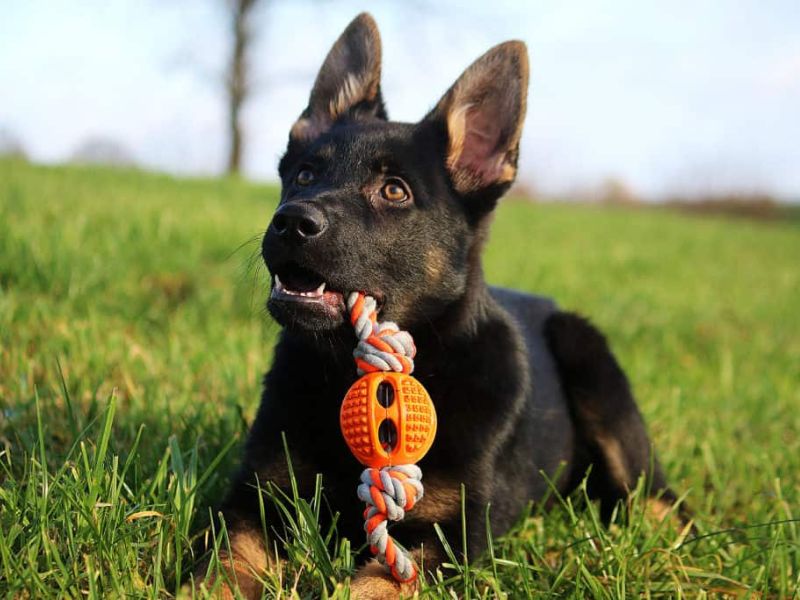
The ideal owner for a German Shepherd is someone with an active lifestyle who can provide both physical and mental stimulation. This energetic breed thrives on challenges and companionship, so someone who enjoys outdoor adventures, training sessions, and playtime would be a great fit.
As mentioned, German Shepherds require interaction and involvement, whether it’s joining family activities or mastering a new trick. So, they’re not the best breed for those seeking a low-maintenance dog. However, if you’re ready to invest time and energy, you’ll be rewarded with an incredibly loyal and loving companion – a furry best friend who’s always by your side.
2. How to Take Care of a German Shepherd Dog?
German Shepherd Health Issues
Generally speaking, German Shepherds’ lifespan can expand to 14 years, but they are prone to many health issues throughout that time. Understanding the most common canine health problems will help keep your dog healthy and extend its life. Some of the common health issues that German Shepherd dogs are prone to include the following:
- Hip dysplasia: This genetic issue involves the misalignment of the femur with the pelvic socket of the hip joint, which can cause pain, lameness, and arthritis. The Orthopedic Foundation of Animals reports that approximately 20% of German Shepherds have hip dysplasia.
- Elbow dysplasia: This is similar to hip dysplasia but affects the elbow joint instead.
- Bloat: This is a severe and potentially life-threatening condition in which the stomach twists on itself and cuts off blood flow.
- Degenerative myelopathy: German Shepherd puppies can have a progressive spinal cord disease that can cause hind-end weakness and paralysis.
- Osteochondritis: This disorder can cause pain and lameness in the front legs.
- Allergies: German Shepherds can have skin allergies that can make them itch, lose hair, and get skin infections.
- Epilepsy: This is a neurological disorder that can cause seizures.
Regular veterinary check-ups, a balanced diet, and exercise can help keep your German Shepherd dog healthy and reduce the risk of these health issues. The National Breed Club suggests the following health examinations:
- Hip evaluation
- Elbow evaluation
- Temperament test
Side Note
While some health concerns are more common in German Shepherds than in other breeds, it doesn’t mean every dog will develop them. Think of it as a higher risk, not a guaranteed outcome.
German Shepherd Grooming
As mentioned, German Shepherds have a double coat of medium length. The outer layer is a tough, weather-resistant shield, while the undercoat provides softer insulation. While brushing every few days keeps loose fur in check, brace yourself for twice-yearly shedding seasons where more frequent brushing becomes essential to manage the fur that might otherwise take over your furniture.
Luckily, these pups don’t require bathing frequently; every three to four months is fine. Nail care, however, is crucial. Long nails can cause discomfort and foot problems, so monthly trims or grinding are recommended if natural wear and tear doesn’t keep them short enough.
To avoid tartar buildup, use a canine toothbrush and toothpaste during daily grooming sessions, and have your vet clean their teeth once a year. While a German Shepherd’s ears do not require frequent cleaning, you should check for symptoms of infection while brushing your dog’s fur. If needed, contact your veterinarian once you see any signs of infection.
>>> Discover more helpful antifungal dog shampoos to keep your dog’s coat shiny and healthy!
Dog Training
Early exposure to people and places sets them up for success as well-adjusted grown-ups. Puppy training classes are a great start, and continuing obedience training strengthens their good manners. Remember, these smart cookies respond best to consistent, positive training with treats and praise.
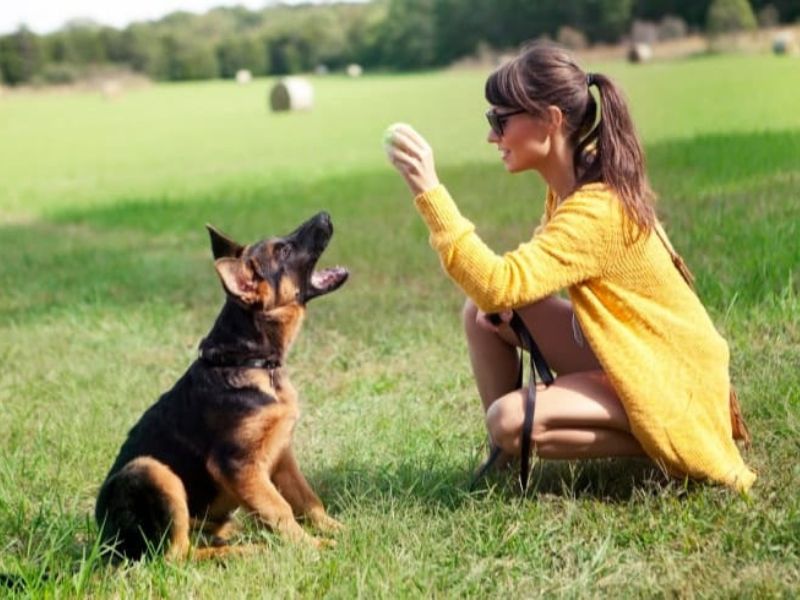
German Shepherds are highly trainable, and they typically enjoy challenging tasks. These brainy pups have a strong desire to learn and stay busy, so they will be eager to expand their skill beyond the basic commands like “sit,” “stay,” “come,” and “roll over.” The training challenges will transform GSDs into confident pups and make them feel like an essential part of the pack. Plus, positive reinforcement training doubles these sessions as bonding time – win-win!
Additionally, since German Shepherds have a strong bite, it’s crucial to start teaching bite inhibition (gentle mouthing) early on. This way, you can raise a well-trained German Shepherd who knows the difference between playful interaction and misusing their teeth, preventing unwanted biting.
Exercise Needs
German Shepherds are high-energy dogs who require regular exercise to maintain their physical and mental health. An adult dog requires at least two hours of daily exercise to meet their energy levels. Consider taking your dog on different routes and locations, like dog parks, to keep things interesting.
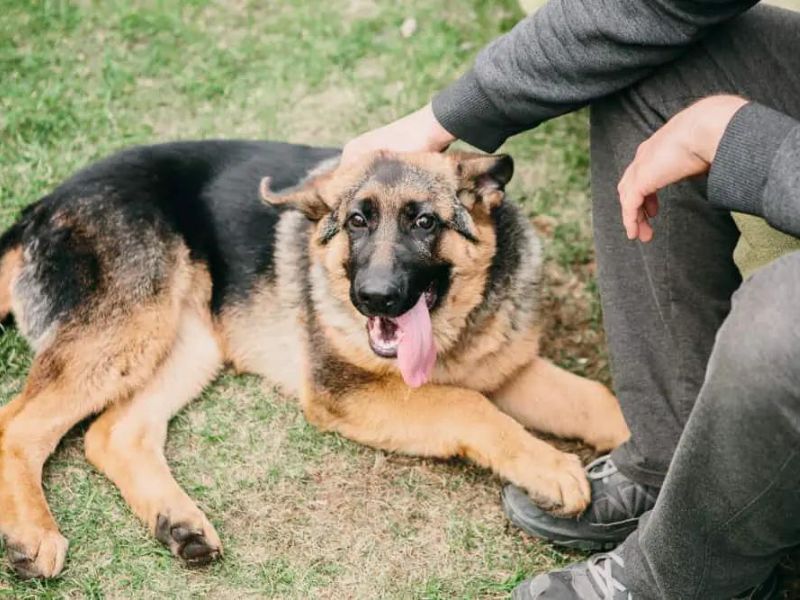
It’s essential to be mindful of how German Shepherd puppies exercise to prevent any harm to their still-developing joints. Starting with short daily walks and engaging in play sessions in a safely fenced area is a good way to begin. It is recommended to avoid intense activity like running or playing on hard surfaces such as pavement until they are about two years old. Grass surfaces are preferable, and it’s okay for them to do some tiny jumps.
Side Note
If you want to add more fun to daily exercise, consider dog sports like agility, herding, tracking, or dock diving – these activities are a blast for you and your furry friend!
Nutrition
This large dog breed is active, muscular pups, so they need high-quality food packed with protein to keep them energized all day. Look for high-protein dog food packed with omega fatty acids and vitamins – this combo keeps their coat shiny, skin healthy, and bones strong. Adult GSDs typically need 2-3 cups of kibble daily, split into two meals.
While giving your dog an occasional tiny treat like a piece of kibble or a dog biscuit is okay, table scraps can upset their tummy. Skip cooked bones and fatty foods altogether. A good diet typically doesn’t require supplements, but a dollop of yogurt, some cooked veggies, or eggs can be a healthy addition to their meals.

When feeding German Shepherd puppies, you should pay extra attention. During the period between four and seven months, their rapid growth makes them more prone to bone-related problems. A high-quality, low-calorie diet is recommended to regulate their growth rate and address these concerns.
Remember, some human foods are doggy dangers, so do your research! Always consult your vet if you have questions about your pup’s weight or diet.
Ideal Living Environment
The most important thing if you want your German Shepherd dog to thrive as a pet is to be willing to devote time and energy to playing with and training the dog. So living in the country or the suburbs, with more room to run around and play, is preferable. Moreover, because of their size and energy level, these dogs are best suited for a home with a fenced-in yard.

German Shepherds can live well in apartments with plenty of fresh air, exercise, and engage in exciting indoor pursuits. But if living in a city with plenty of people and dogs, their protective instincts can be overwhelmed, which might make them suffer from stress. So you can take it for walks during less chaotic times of the day and along less hectic routes to reduce anxiety.
German Shepherds may look tough, but they’re relatively gentle. If left alone for too long, they may develop severe loneliness. If you are gone for an extended period, consider putting your dog in doggie daycare or hiring a pet sitter.
3. Getting a German Shepherd
German Shepherd Dog Price

The initial cost of a puppy can range from $500 for an unpedigreed pup to $3,500 or more for a show-quality dog with champion bloodlines. But that’s just the beginning. Factor in high-quality food, regular vet checkups, training classes, and potential pet insurance; the yearly cost can add up to several thousand dollars. Remember, a German Shepherd is a commitment for 10-13 years, so be sure you’re financially prepared to provide them with the care they deserve.
German Shepherd Dog Rescue

Adoption is a fantastic way to welcome a German Shepherd into your life. Nearly half (46%) of German Shepherd owners found their furry friend through a shelter or rescue. These dogs often come with a big bonus: they’re usually already spayed/neutered and have their vaccinations up-to-date. Plus, since many surrendered German Shepherds come from families, these dogs may already know basic commands and be comfortable around people.
Even if a rescue dog hasn’t had much training or socialization yet, don’t worry! Reputable dog trainers can help you teach them the ropes or work through any past trauma. With patience and love, you can create a happy and fulfilling life for both you and your adopted German Shepherd.
Here are some German Shepherd dog rescues you can consider:
- Sylvester’s Haven
- German Shepherd Rescue of Orange County (GSROC)
- Middle Tennessee German Shepherd Rescue
- Imminent Danger German Shepherd Rescue
German Shepherd Breeders
If you want to get a puppy, look for a reputable German Shepherd breeder first. Responsible breeders prioritize the health and temperament of their dogs. They typically conduct extensive health screenings on breeding stock to avoid passing on genetic issues. While the initial cost of a puppy from these breeders can be higher, you’re more likely to get a healthy dog with a good foundation for training and living as part of your family.

Stressed about finding a good German Shepherd breeder? The American Kennel Club (AKC) has a handy search tool to connect you with reputable breeders in your area. But the AKC isn’t your only option – many breeders have websites, too. Just be on the lookout for puppy mills or scams that might try to sell you an unhealthy dog or even disappear with your money.
Meeting the breeder and their dogs is also an important step when choosing a dog. Ask about any health problems in the puppy’s family line and consider requesting genetic tests for issues like Von Willebrand’s disease. Ideally, you’d also get to meet the puppy’s parents. This gives you a sense of their temperament and helps you predict what your pup might be like when growing up.
>>> Check out these amazing country dog names to pick one for your new puppy!
4. German Shepherd Fun Facts
4.1. Hollywood Star
In the 1920s, the German shepherd Rin Tin Tin acted in several films after being rescued from a battlefield. He is regarded as the driving force behind the breed’s meteoric rise to fame and subsequent media dissemination, most notably in the eponymous 1950s television smash The Adventures of Rin Tin Tin.
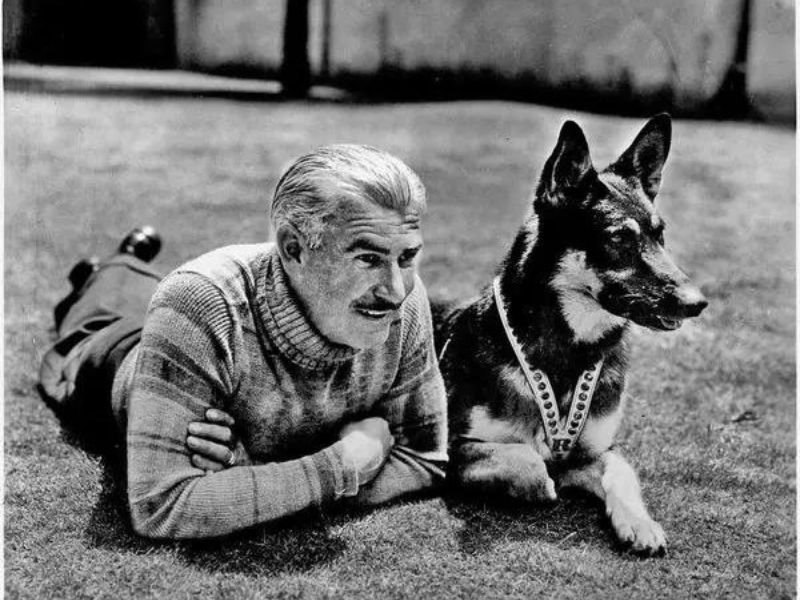
4.3. Good Sniffers
German Shepherd dogs have one of the strongest senses of smell in the canine world. They have about 225 million olfactory receptors in their noses compared to a human’s measly 6 million. This makes them exceptional search and rescue dogs, drug and bomb detection specialists, and even trackers who can find missing people.
4.3. War Heroes
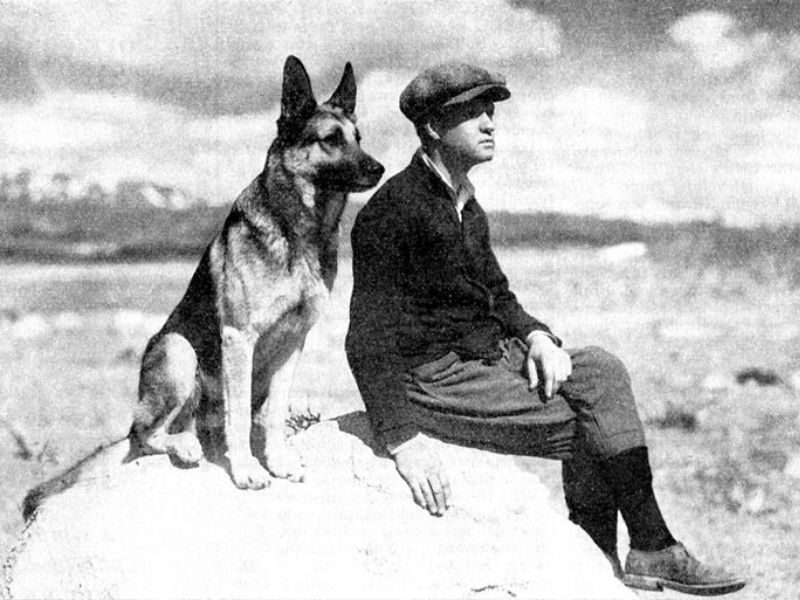
Buddy, a German shepherd dog, and his owner, Morris Frank, are credited as the first American pair to assist visually impaired veterans of World War II after completing the training in Switzerland. During wartime, German Shepherds were also widely used as messenger dogs, carrying vital information across battlefields.
>>>Further reading:
- All Essential Info & Facts To Take Care For A English Bulldog Breed
- Explore The French Bulldog Breed With Key Traits, Care, and Fun Facts
- The Essential Guide To Care For The Golden Retriever Dog
- All About Aussiedoodle Dog: Traits, Health, and Caring
The German Shepherd Dog is an amazing breed with a unique combination of intelligence, strength, and loyalty. They are highly trainable and adaptable, making them suitable for various activities, from search and rescue to obedience training to simply being a loving companion. If you are willing to put in the time and effort, you will be rewarded with a loyal and dedicated companion for years to come. Check out more lovely dog breeds by following the Canvas Personalized.










